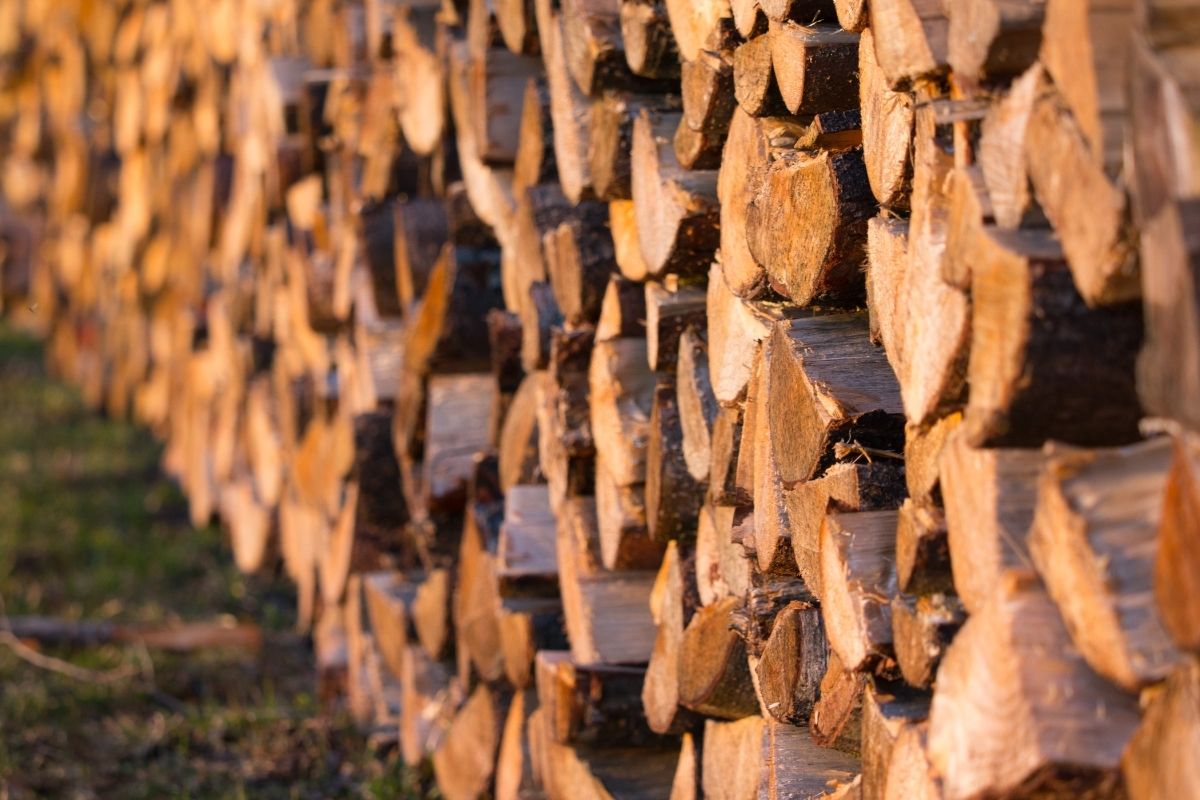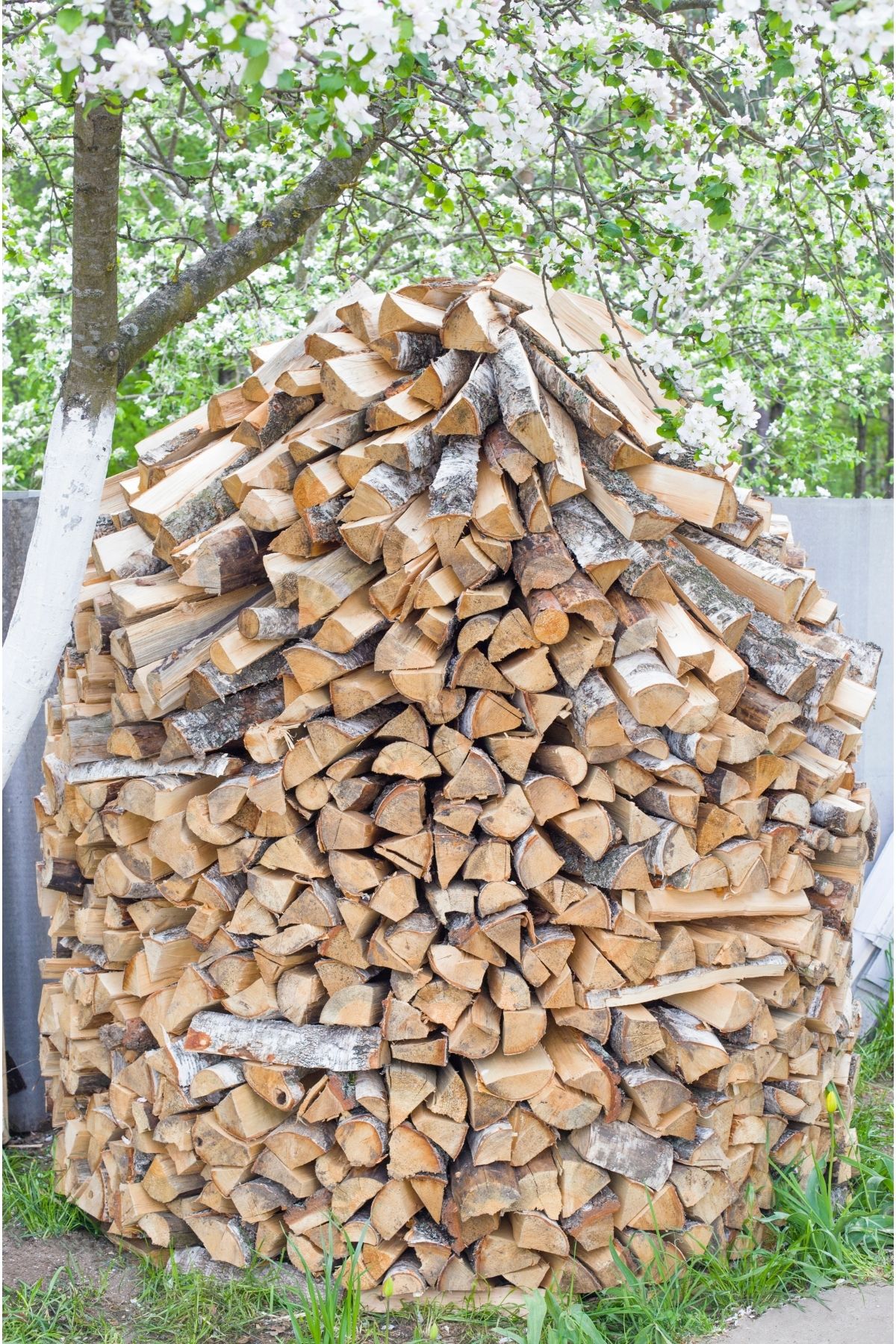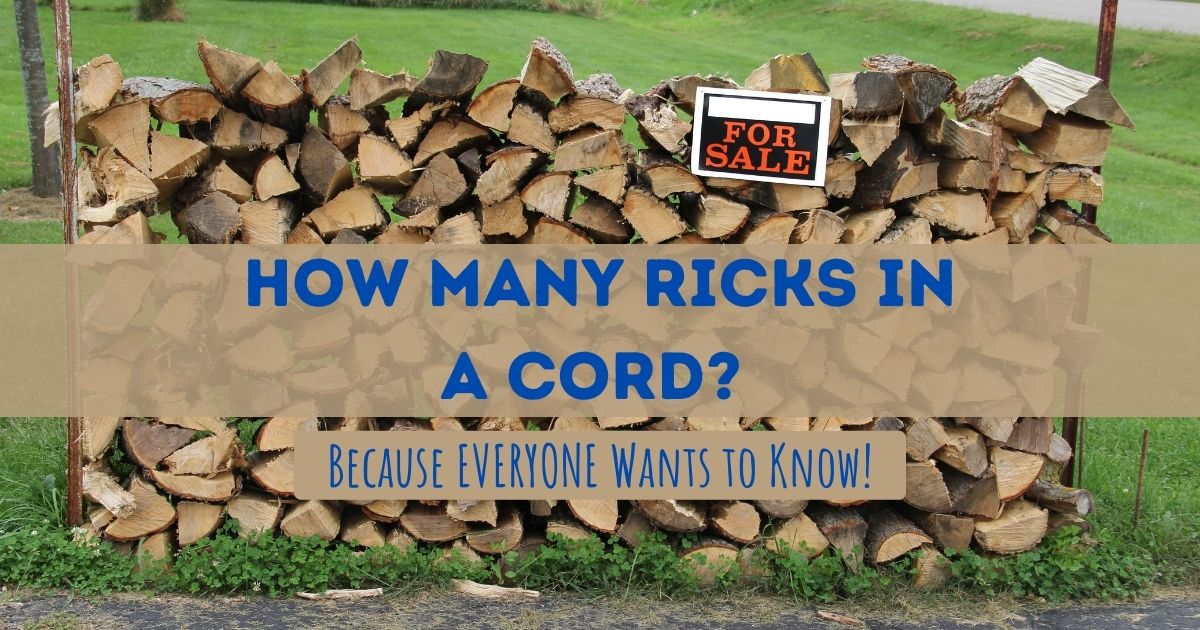What is a Rick of Wood?
The cold season brings a desire to heat your home, which necessitates knowing how many ricks in a cord you’ll need. But you first need to understand what a rick of wood is. A “rick” is a 4-foot (1.2-meter) tall, 8-foot (2.4-meter) long stack of firewood that comes in a variety of widths depending on the firewood supplier, region, and local market.
A face cord is a term used to describe this setup.

How Much is a Rick of Wood?
A rick of firewood is smaller than a complete cord of wood, yet it is still a substantial amount. A face cord is the same amount of firewood that rick alludes to. Does this sound perplexing? Consider the following scenario:
A Full cord, face cord, and a half cord are among the several types of cords. Full cords consist of an 8-foot (2.4-meter) wide, 4-foot (1.2-meter) tall, and 4-foot (1.2-meter) deep stack of wood.
A face cord, on the other hand, is an 8-foot (2.4-meter wide), 4-foot (1.2-meter) tall, and 16 to 18 inches (40.6 to 45.7 centimeters) deep stack that costs the same as a rick.
A rick, also known as a face cord, is the same height and width as a complete cord of firewood. For example, a full cord is 4 feet (1.2 meters) deep, but a rick or face cord is only 2 feet (0.6 meters) deep.
How Big is a Rick of Wood?
It’s probably a good idea to know what a cord of wood is to comprehend how big a rick of wood is. A line of wood is a stack of wood that measures 4 feet (1.2 meters) tall by 4 feet (1.2 meters) wide by 8 feet (2.4 meters) long. Now, how big is a rick of wood?
A rick is essentially a fraction of a whole cord. Based on the fact that a full cord of wood is 48 inches (1.2 meters) wide, below are firewood cord dimensions showing firewood rick width by their respective size to a full cord:
- 1/4 of a cord of wood is equal to a 12-inch (0.3 meters) wide rick.
- 1/3 of a cord of wood is equivalent to a 16-inch (0.4 meters) wide rick.
- 1/2 of a cord of wood is comparable to a 24-inch (0.6 meters) wide rick.
The Dimensions of a Rick of Wood
The following numbers represent the potential dimensions of a rick of wood:
- 12 inch (30 centimeters) rick, 4 feet (1.2 meters) high x 1 foot (0.3 meters) wide x 8 feet (2.4 meters) long, or;
- 16 inch (40 centimeters) rick, 4 feet (1.2 meters) high x 1.33 feet (0.4 meters) wide x 8 feet (2.4 meters) long, or;
- 4 feet (1.2 meters) high x 2 feet (0.6 meters) wide x 8 feet (2.4 meters) long.
This is why it’s crucial to know the breadth of any firewood rick you’re considering buying. A rick of firewood from different vendors or other parts of the country may not be the same. As a result, the variation in the amount of wood you buy could be significant, and you can end up with less or more than you need.
You can’t presume that all sizes are the same. Take the time early in the vendor selection process to double-check.
How to Split Wood into Ricks
Cutting and stacking ricks of firewood was one of the most challenging duties before coal heat. The job is simple, but the most time-consuming part is drying and stacking the wood. Cutting and chopping wood is one of the riskiest jobs you can do. Get some or borrow some before diving in if you don’t have leather chainsaw chaps or other protective gear.
If you want to cut down the tree, you need to engage a professional logger or millworker with lots of experience. Follow these steps to split wood into ricks:
Measure the Wood
You should have a pencil or marker in your hand before you start cutting. Make a mark every 16 to 18 inches (40 to 45 centimeters) on the board’s surface with this pencil. These marks will show you where you cut while also allowing the pieces to stack nicely. With their axes, advanced employees may notch the logs.
Cut the Logs into Sections
For cross-cutting and splitting, cut the larger variety of wood into manageable pieces. It also speeds up the weathering process because it exposes more surface area to the wind and sun.
Crosscut the Logs
Cross-cutting should occur after you have cut all the other pieces to size. The most important aspect is the measurement. Don’t cut corners. Use a chainsaw and make the cuts as square as possible to keep them even.
Split the Logs with a Cudgel Ax or a Splitting Machine
Split the massive 16 to 18-inch (40 to 45-centimeter) portions into logs that are easier to manage. It may take several rounds to get suitable wood for this area. Remember that you’ll need 128 cubic feet (3.6 cubic meters) of lumber. That’s enough to fill a truck’s bed multiple times over.
If you use a lot of wood each year, you should consider renting or purchasing a log splitter.
Prepare the Stacking Ground
Before stacking, make sure you elevate the wood off the ground. Bugs and dirt will embed in the wood if left on the ground, preventing it from burning evenly.
Stack the Wood in Cords
A properly stacked stack of wood will guarantee that the wood burns evenly and that no dirt or rocks adhere to the logs. This timber may be crucial to your survival. If you don’t store it properly, you could be in for a long winter of wood purchases.
Cover the Wood
Now that you have ricked and corded it, it’s time to cover the wood with a tarp. To keep the water away from the pile, you should cover it with a plastic tarp. Keep some room around the stack because complete coverage will cause mold and mildew to grow inside the cover.
After you’ve completed the entire felling to covering procedure a few times, you’ll devise a plan to make it faster and more efficient. During the winter, dry wood is essential for survival. A blunder during the process could leave you without food or heat for several days, which could be fatal.

What Does Well-Weathered Firewood Look Like?
Having good wood to burn produces a pleasant and tranquil aroma and produces the popping sound that all fire watchers are familiar with. In addition, the removal of water and sap from the wood makes it easier to burn and much more challenging to break.
When you’re getting ready to break into the fresh woodpile, there are a few clues to check for to see if the ricks of wood are ready to burn:
Wood is a Light Material
When a piece of wood has lost all of its water, it becomes buoyant and much lighter than usual. When you cut down wood, it can contain up to 25% water by volume. As a result, the log will be pretty light once you have removed the water, and you should be able to carry multiple pieces at once.
The Bark is Peeling Off
The log’s bark should be loose. While some pieces may be breaking off, make sure they are at the very least simple to remove. Water and sap maintain the bark near the tree’s surface, and when they’re gone, the bark will peel off.
Cracked Ends
Cracked Ends The fractures indicate that the wood has lost its water content and drained any sap or excess.
Sounds Hollow
When you knock on wood, it will make a hollow sound. Make sure a few logs are banging against each other to provide the hollow sound you’re searching for.
The Color Gray
When wood dries out, the yellowish color of tree flesh and sap fades away. The wood will be ready to burn once it turns gray. The gray tint is challenging to notice, and depending on the type of wood you’re burning, it could be white.
No Odor of Wood
When firewood is ready to burn, it will lose its woody odor. Likewise, the wood will have lost its aroma once the sap has dried off. So grab a few pieces and give them a good sniff before tossing them into the fire.
Why Should You Keep Your Firewood in Ricks?
Keeping your firewood in ricks is essential because it makes handling easier. Ricks also improve the burn quality in the appliance you’re using.
Where Does a Rick of Firewood Come From?
The simplest explanation is that a rick of firewood is just a term for a stack of wood of a specific size. ‘Rick’ is derived from an Old English term that means a pile or heap of something. It commonly refers to a stack of hay, corn, or (of course) wood.
The word made its way from England to North America long ago, and it is still widely used, particularly in the Midwest.
Cord Vs. Rick-The Difference
The quantity of firewood is measured differently in different nations. The terms “cord” and “rick” refer to two other techniques of measuring firewood. So, let’s have a look at what these terms represent and how they differ from one another:
What is a Cord of Firewood?
A cord of wood is equivalent to 128 cubic feet (3.6 cubic meters) of stacked or piled firewood. When the quantity of wood is 180 cubic meters (6356 cubic feet) or depending on how loosely the wood is stacked, the firewood is stacked tightly or loosely to produce a full cord. This is an authorized way to measure firewood in many nations.
Let’s discuss the cord’s dimensions now. The measurements are usually 4 x4 x8 inches (10.2 x 10.2 x 20.4 centimeters)) which equals 128 cubic feet (3.6 cubic meters). This is one of the most frequent measurements, although you can select any size until you reach 128 cubic feet (3.6 cubic meters).
Even if you put the wood at the top of the bed, there’s a potential of having a regular-length bed for F-250 measurements; this could be somewhat more than half a cord. This includes considering the amount of space taken up by the wheel wells.
What is a Rick of Firewood?
A rick of firewood is sometimes known as a face cord, and its measurements aren’t always consistent. Unlike the mandated size of 128 cubic feet (3.6 cubic meters) for cord, rick measurements may vary from location to location. This is also one of the most challenging aspects of purchasing the rick since you have no idea how much wood you are getting.
Let’s get started with math. So, if you cut 16-inch-long (40 centimeters) wood that you stack at 4 feet (1.2 meters) high and 8 feet (2.4 meters) long, a rick will be 1/3 of a cord. If the logs are cut into 24 inches (60 centimeters) lengths using the same method, you may consider a 1/2 cord.
In a nutshell, the length of wood has a direct impact on the amount of wood you’ll receive.
One method for determining the actual measurement is to measure the stack of wood by the length of the logs. The homeowners choose a size of 16 inches (0.4 meters) since it is easier to utilize and accept. When you need timber for a specific purpose, this makes things easier.
Some people are wary of buying wood based on this measurement since it can be tricky. Unfortunately, the only way to figure out how much wood you’re getting is to measure it, which is impossible when it’s packed in a pickup truck, especially if you don’t stack it correctly.

Knock on Wood!
You may plan for the winter ahead now that you know the different sizes of cords and ricks. Depending on where you live, firewood might be a more homey and perhaps less expensive heat source than gas.
Using firewood is pretty simple, but it will require some forethought and effort. Ensure that you buy the proper stack and that you stack your wood effectively and carefully so that it lasts all winter. With all of this information in your arsenal, you’ll be able to keep your home warm and cozy during the coldest months of the year.
